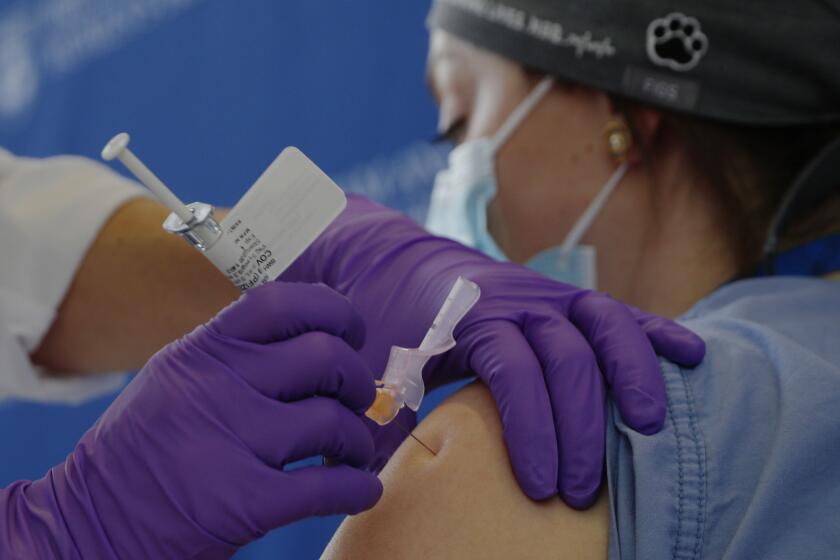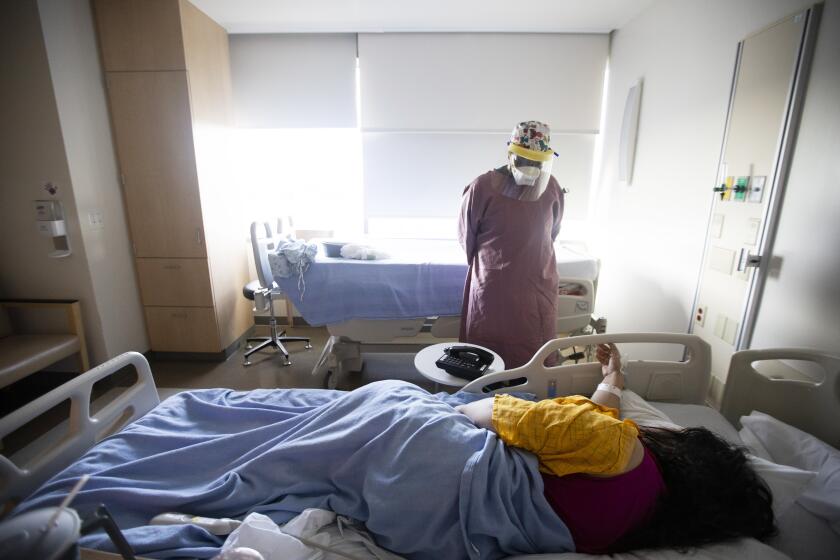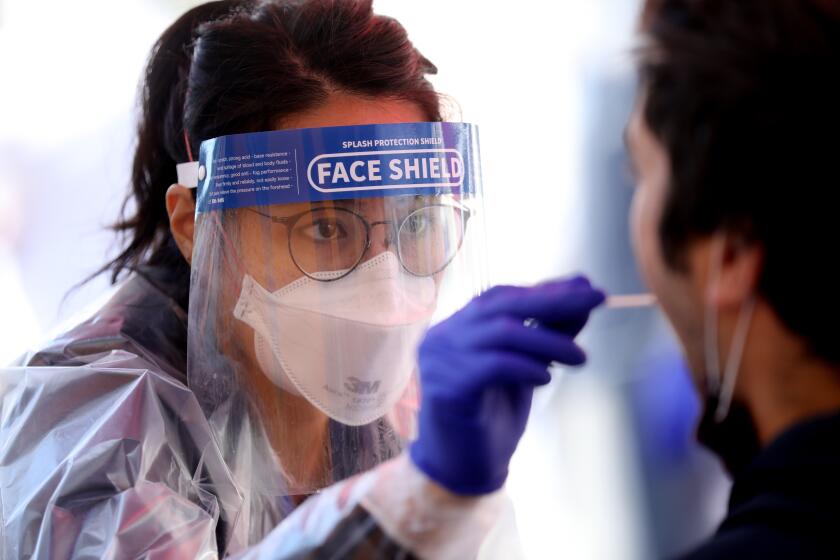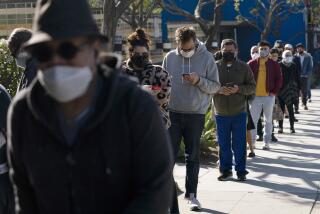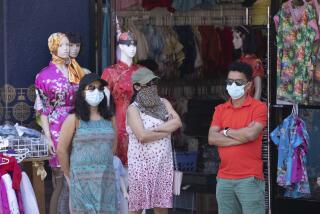How race factors into decisions about who should get priority for COVID-19 vaccines
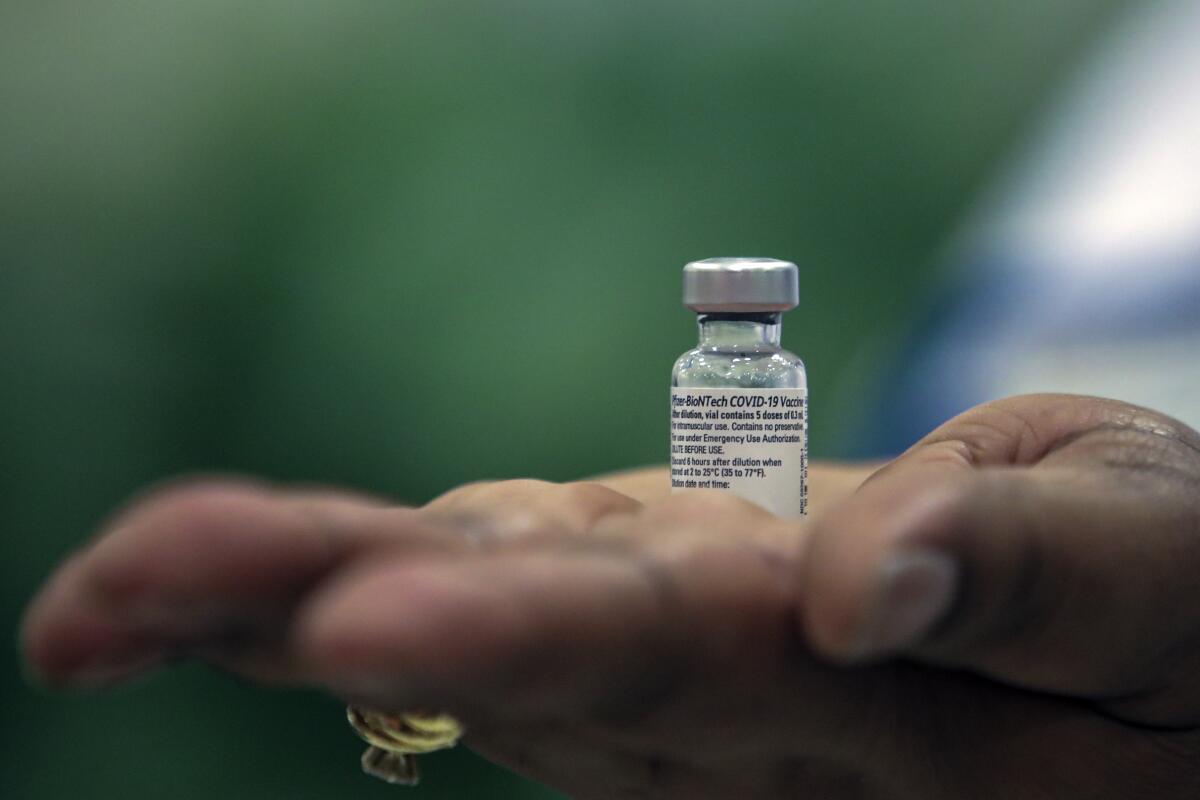
At the height of a pandemic that has torn through America’s communities of color with particular ferocity, health officials are engaged in a fraught exercise in fairness: how to nudge communities of color toward the front of the line for scarce vaccines while pretending that race and ethnicity have no influence on vaccine priority.
The country has been deeply divided over quotas and affirmative action since long before the current health crisis. Assigning vaccine priority on the basis of race or ethnic heritage would therefore invite debate, recriminations and legal challenges.
The numbers, however, are stark. Nationally, Black and Latino Americans are hospitalized at rates roughly four times higher than white Americans, and their risk of dying of COVID-19 is close to three times higher. The death rate for American Indians and Alaska Natives is nearly double that for white Americans, according to the Centers for Disease Control and Prevention.
In response, experts in public health and medical ethics have spoken with virtual unanimity. They argue that heavy burdens of poverty, discrimination and social disadvantage have led to disproportionate rates of infection, hospitalization and death in communities of color. That outsized vulnerability to COVID-19, in turn, demands that these groups get some priority access to vaccines.
The final step in that chain of reasoning — that communities of color should get the vaccine ahead of others — is rarely expressed alone, and that is no accident.
In months of public deliberations, the federal government’s key panel of vaccine advisors repeatedly cited “equity” as a criterion for determining the order in which a vaccine should be allocated. In cases where conditions of work, housing, transportation and education have conspired to make a group more vulnerable to COVID-19, panel members have cited equity as the basis for giving that group early access to a vaccine.
Skin color and ethnicity, while strongly correlated with those conditions, were largely treated as incidental.
This reasoning drove the CDC’s vaccine advisory panel to put “essential workers” right behind healthcare workers and nursing home residents in the line for scarce vaccines.
“If we’re serious about valuing equity, we need to have this,” said Dr. Beth P. Bell, an expert on pandemic preparedness at the University of Washington and member of the CDC advisory panel. “To begin a vaccination program with a very strong statement about equity is important.”
Americans waiting their turn for a COVID-19 vaccine may not be pleased to see who’s in line ahead of them. Does a prisoner or smoker deserve it more?
Dr. Georges Benjamin, executive director of the American Public Health Assn., calls race and occupation “surrogate markers” for the kind of vulnerability that requires vaccine priority. Neither is perfect, he said, but one or the other will probably lead you to who should be next in line.
“If you only do it on race, then I’d be at the front of the line,” said Benjamin, who is Black. “But I’m a paper pusher right now: I can work from home. The guy who picked up my trash yesterday morning should be ahead of me, and he’s African American.”
“We have to be sensitive to race,” Benjamin added. But it doesn’t tell the whole story.
Another way in which race falls short: Biological differences do not account for the racial and ethnic disparities in COVID-19 illnesses and deaths, a conclusion most recently drawn by a study of close to 10,000 patients in New York. Overwhelmingly, the outsized vulnerability of Black, Latino and Native Americans is best explained by the social and environmental features of living on the lowest rungs of the economic ladder, the study authors found.
These “existing structural determinants ... that remain pervasive in Black and Hispanic communities should be addressed in order to improve outcomes in COVID-19-related mortality,” the team led by Dr. Olugbenga Ogedegbe of New York University wrote.
Some influential people, including philanthropist Melinda Gates, have been explicit in their support of extending vaccine priority to communities of color, right after healthcare workers and nursing home residents have gotten theirs.
The backlash has been severe.
When Harald Schmidt, a medical ethics and health policy expert at University of Pennsylvania, said vaccines should be used to help “level the playing field” in the pandemic, he was labeled a Nazi and accused of wanting to “kill old people because they’re more white” than those working in front-line essential jobs, who skew heavily Black and Latino.
It’s not at all clear that vaccine priority would be welcomed by Black Americans, whose particular mistrust of the medical establishment is fueled by generations of ethical abuses. In a late November poll by the Pew Research Center, only 42% of Black adults said they would “probably” or “definitely” take the vaccine, compared with 61% of white, 63% of Latino and 82% of Asian adults. On social media and elsewhere, skeptics spread the widespread fear that prioritization could be a smokescreen for using Black people as vaccine guinea pigs.
Even if the vaccine were wanted, any plan to distribute it according to race and ethnicity would probably spark legal challenges, such as those that have targeted affirmative-action programs for college admissions and employment, said Dr. Eric C. Schneider, vice president of the Commonwealth Fund and an expert on vaccine allocation. Instead, he said, state and local authorities will need “workarounds” that focus on specific disadvantages such as housing, occupational hazards and access to medical care.
“That’s a tricky exercise,” he said.
Only 32% of Black adults say they would take a COVID-19 vaccine. That speaks volumes about the need for a reckoning on racism in healthcare and building trust in the communities hit hardest by the pandemic.
Legally, health officials are in uncharted territory. Courts have never been asked to adjudicate the use of race or ethnicity in allocating scarce healthcare resources. And they certainly have not been asked to judge whether states may use a scarce resource such as a vaccine to right historical or present-day social wrongs.
In other public policy matters, courts made clear that race can be a factor only when a compelling government interest is at stake, and even then, there should be as little explicit use of race or ethnicity as possible.
The CDC has asked states to thread that needle. In its guidance to state and local planners, the agency urged them to identify “critical populations” that should get the vaccine early, including “people from racial and ethnic minority groups.”
To do that, the CDC suggested they build upon a measure first devised to identify communities that would probably need extra resources to recover from hurricanes, earthquakes or other natural disasters. The “social vulnerability index” uses race, ethnicity and language as one measure of disadvantage; others focus on income, education levels, housing density and reliance on public transportation.
In a report to the CDC, a panel of the National Academies of Sciences, Engineering and Medicine urged states to reserve 10% of their early vaccine allocations for the areas that rank in the bottom 25%, according to the social vulnerability index. In practice, that doesn’t mean that when the time comes to vaccinate essential workers, white people would be shunted to the back of the line. But it does mean that more vaccine drives might be held in neighborhoods with large populations of Black and Latino workers.
A total of 32 states intend to incorporate either the social vulnerability index or a related software system called Tiberius into their vaccination plans, according to a review led by Schmidt. California is using the health equity metric it previously developed to guide its decisions about reopening the economy.
California establishes a reopening requirement for counties: Reduce infections in communities where the poor and people of color live.
The remaining 17 states won’t use any such metric to guide their vaccine allocation decisions. In three of those states — New Mexico, Georgia and Texas — racial or ethnic minorities make up 30% or more of the population.
Lawrence Gostin, a Georgetown University expert in public health law, calls racial preferences for COVID-19 vaccines “an ethical imperative,” and he said there are many ways for state and local public health agencies to ensure that outcome without running afoul of the law.
For example, “a vaccine distribution formula ... could lawfully prioritize populations based on factors like geography, socioeconomic status, and housing density that would favor racial minorities de facto, but not explicitly include race,” Gostin wrote in the Journal of the American Medical Assn., along with Schmidt and Harvard public health expert Michele A. Williams.
Public health agencies “should not exacerbate racial divisions” with their vaccine decisions, the trio wrote. But they have an opportunity to become “agents of change toward improving social and racial justice,” they added, and must not shy from considering racial disadvantage in their calculations.
Schmidt said he has been surprised by the “embrace of equity” detailed in so many states’ plans. Even under extreme stress, they appear to acknowledge that public health disparities — both past and present — must be addressed.
But it’s not clear to him that the middle of a pandemic is the right time to test the legal limits of restoring justice to ethnic and racial groups.
Maybe, Schmidt said, “it’s smarter to not talk about race and just do it.”
